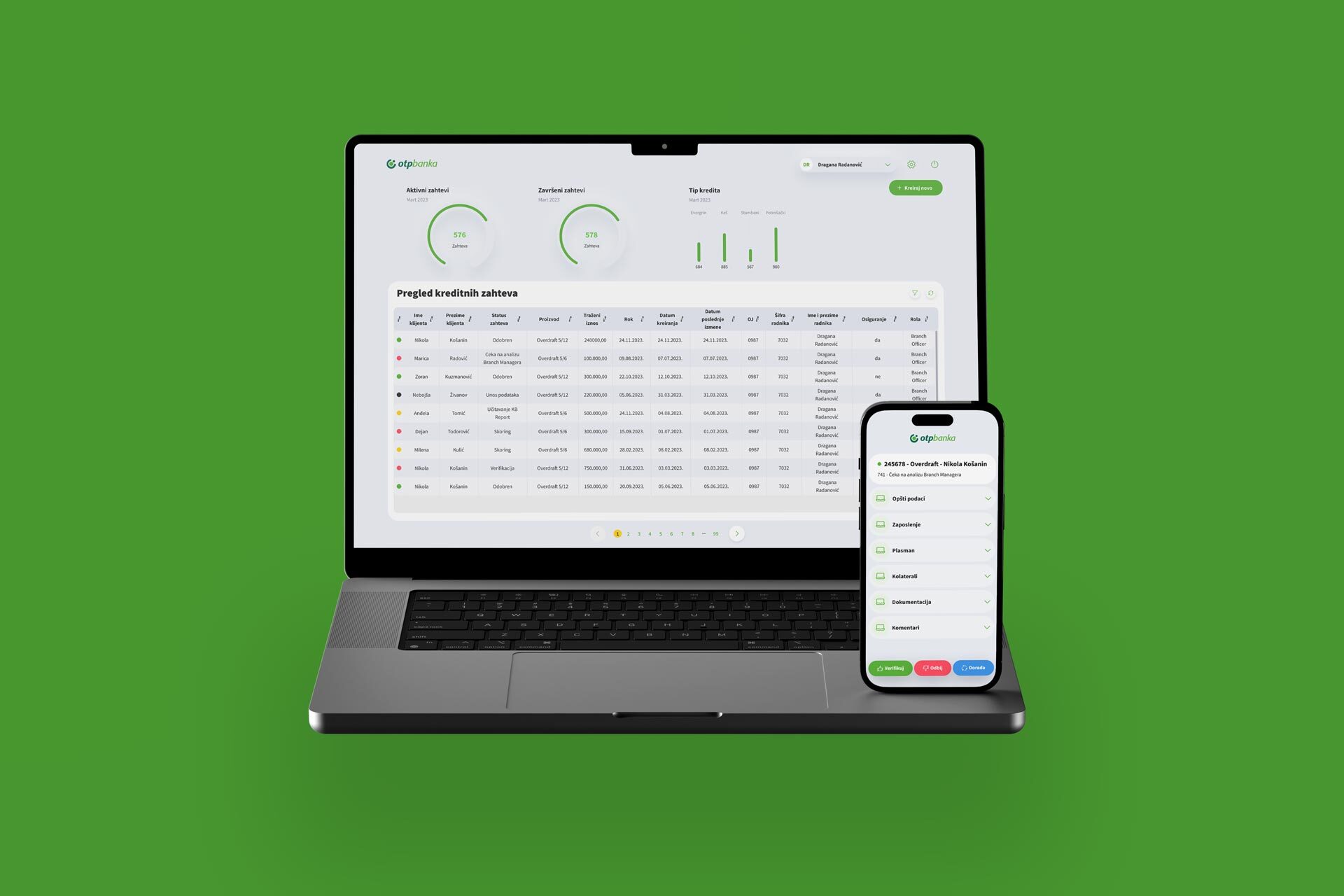
The Challenge
OTP Bank Serbia faced the challenge of closely monitoring and optimizing its origination processes while utilizing analytics to identify bottlenecks. The bank’s innovative strategy required frequent reviews and improvements to these processes, necessitating a software solution that could support and adapt to these changes.
The existing software solution at OTP Bank Serbia lacked the performance needed to meet these demands. The bank needed a more efficient system to deliver a credit application response faster, ensuring that clients received immediate feedback while still at the counter. Additionally, the solution required an API to be used by other digital channels, facilitating seamless integration across various platforms.
The challenge was to develop a high-performance software solution that met the current needs and supported ongoing process improvements and integration with other digital channels. This new solution had to replace the existing system with a significantly more efficient and adaptable platform.
Solution
Sipod developed a comprehensive Business Process Management (BPM) platform for OTP Bank Serbia, leveraging the Camunda open-source library and a .NET microservice architecture. This innovative solution enables the bank to develop and monitor its origination and other processes with enhanced efficiency and flexibility.
Camunda, as the core process orchestration tool, provides visualization capabilities using BPMN notation and allows for the creation of complex process components based on decision-making (DMN). The solution integrates with over 20 existing bank services and uses a microservice architecture and RabbitMQ message broker. This architecture ensures scalability and high efficiency for both maintenance and future development.
A clear and easy-to-use web application interface design helps users operate the system without errors. The task management-based interface ensures users understand what actions to take and the next steps in the process, while powerful dashboards allow management to monitor and analyze process execution effectively.
The first process implemented on the platform was the overdraft process. The interface adheres to the bank’s design standards, ensuring a consistent user experience across different applications. This alignment maintains a seamless transition for users, enhancing usability and satisfaction.
Benefit
The implementation of the BPM platform brought significant advantages to OTP Bank Serbia. The universal platform now supports the development of various processes beyond origination, including onboarding, procurement, and approval.
With the visualization of each step, the process clarity improved, making it easier to understand and follow. The process versioning capability allowed the bank to monitor the impact of any changes on efficiency and workflow. Detailed logging facilitated quick identification and resolution of issues within any integration service, while the microservice architecture enabled isolated fixes and seamless updates.
Measuring the performance of the overdraft process revealed remarkable improvements. The “Time to Yes” response for overdraft requests was significantly reduced, making it much faster than the previous system, and the response time for rejected requests was also shortened considerably.
Overall, the platform resulted in a much more efficient credit application process, reducing error rates and processing costs. The enhanced efficiency and clarity have greatly benefited the bank, allowing for smoother operations and better customer service delivery.